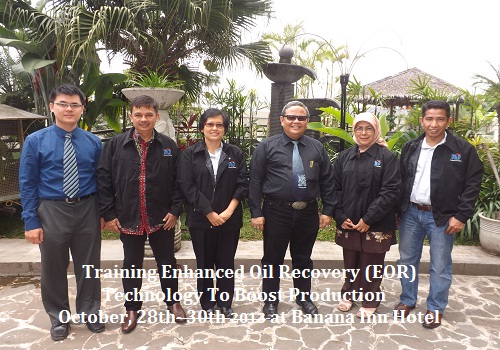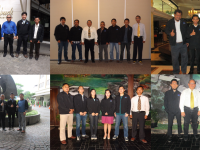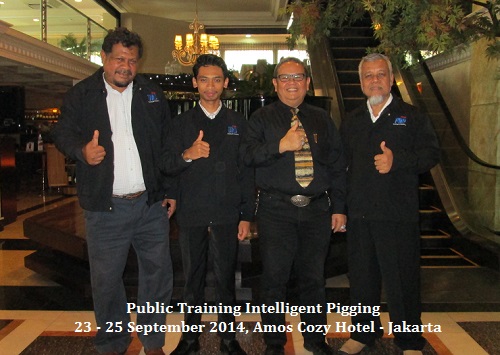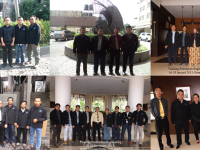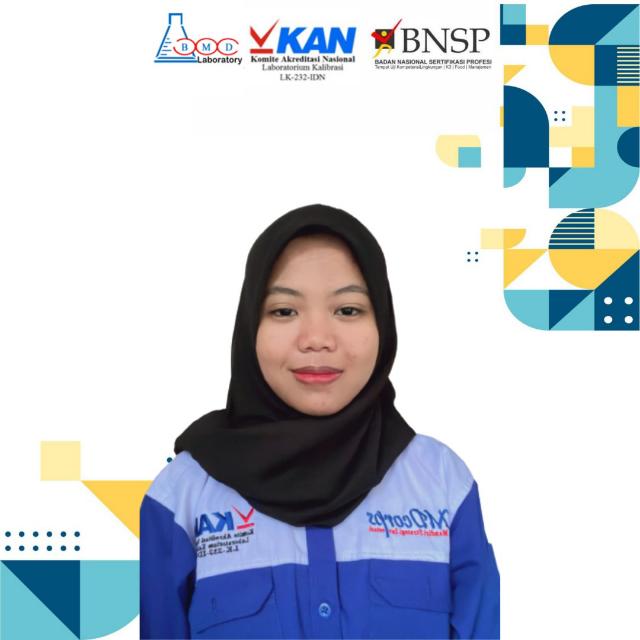INTRODUCTION
Training Enhanced Oil Recovery (EOR)– Oil recovery operations traditionally have been subdivided into three stages: primary, secondary and tertiary. These stages described the production from a reservoir in a chronological sense. Primary production resulted from the displacement energy naturally existing in reservoir. Secondary recovery usually implemented after primary production declined, the term secondary recovery is now almost synonimous with waterflooding. Tertiary recovery was that obtained after waterflooding (or whatever secondary process used) it’s used miscible gases, chemicals and/or thermal energy to displace additional oil. When the waterflooding stage might be reasonably be bypassed the term tertiary recovery fell into disfavor in petroleum engineering term and the designation of enhaced oil recovery (EOR) become accepted to replace the term of secondary and tertiary recovery.
In describing the different EOR processes (Waterflooding, Miscible Displacement, Chemical Flooding: Micellar/Polymer, Surfactant, Alkaline and finally Thermal Recovery Processes, it will be focused on the fundamental concepts of each processes and it will also present methods of predicting oil recovery when the processes are applied to oil reservoir. Many methods are available to calculate displacement performance, ranging from simple models based on volumetric sweep to sophisticated method. Thus, with the proper understanding of all enhanced oil recovery processes will reduce the entire cost of the plant and production operation of EOR system.
This five-day training will provide a comprehensive knowledge and understanding of different EOR processes (Waterflooding, Miscible Displacement, Chemical Flooding: Micellar/Polymer, Surfactant, Alkaline) and Thermal Recovery Processes with various fields example.
OBJECTIVES
- Refresh the knowledge of the participants on reservoir engineering and enhanced oil recovery (EOR) processes.
- Understand the fundamental concepts of each EOR process and ability to calculate and to predict the EOR performance.
- Learn the simple EOR models based on volumetric sweep model to sophisticated method of calculation.
- Enhance the knowledge on EOR processes (Waterflooding, Miscible Displacement, Chemical Flooding: Micellar/Polymer, Surfactant, Alkaline) and Thermal Recovery Processes with various fields example.
- Gain additional knowledge on EOR processes (Waterflooding, Miscible Displacement, Chemical Flooding: Micellar/Polymer, Surfactant, Alkaline) and Thermal Recovery Processes. Knowledge sharing among the participants and instructors
FEATURING THE FOLLOWING SUBEJCTS
Introduction to EOR Processes
- Definition of EOR
- Target Oil Resources for EOR Processes
- Idealized Characteristics of an EOR Processes
- Potential of Different Processes
- Screening Criteria for Process Applicability
Microscopic Displacement of Fluids in a Reservoir
- Capillary Forces
- Viscous Forces
- Phase Trapping
- Mobilization of Trapped Phases-Alteration of Viscous/Capillary Force Ratio
Displacement in Linear System
- Waterflood Performance-Frontal Advanced Equation
- Viscous Waterflood in a Linear System
- Chemical Flooding in Linear System
- Application of Chemical Flooding Model
- Displacement of Slugs
- Dispertion During Niscible Displacement
- Viscous Fingering-Instability in Displacement Fronts
Macroscopic Displacement of Fluids in a Reservoir
- Volumetric Displacement Efficiency and Material Ballance
- Definition and Discussion of Mobility Ratio
- Areal Displacement Efficiency
- Vertical Displacement Efficiency
- Volumetric Displacement Efficiency
Mobility-Control Processes
- Process Description
- Physical and Chemical Characteristics of Polymer
- Flow Polymer Through Porous Media
- In-Situ Permeability Modification
- Mobility Control to maintain Chemical Slug Integrity
- Foam as EOR Agent
- WAG Process
Miscible Displacement Processes
- General Description of Miscible Displecement
- Principles of Phase Behavior in Miscible Displacement
- FCM anc MCM Processes
- Measurement and Prediction of MMP or MME in Multiple Contact Prosess
- Fluid Properties in Miscible Displacement
- Miscible Displacement Modeling
Chemical Flooding
- Description of Micellar/Polymer Process
- Surfactants
- Phase Behavior of Microemultion and IFT
- Variables Affecting Phase Behavior and IFT
- Viscosity and Density of Microemultion
- Displacement Mechanism
- Modeling, design Procedure and Criteria of Chemical Flood Displacement
- Alkaline Flooding
Thermal Recovery Processes
- Heat Losses During Steam Injection
- Cyclic Steam Stimulation
- Reservoir Heating by Steam Injection
- Estimating of Oil Recovery From Steam Drive
- In-Situ Combustion
- Comparison of Steam and In-Situ Combustion
DURATION
3 Day
FASILITY
Normal Class
- Quality training material (hardcopy and softcopy), Quality training kits: bag, block note, ballpoint, including jacket or T-shirt, etc, Convenient training facilities in four or five stars hotel, Lunch per day, morning and afternoon coffee / tea breaks for along the training, Certificate & Photo.
Online Class
- Softcopy Modul dan Sertifikat
INFORMATION & PROMO
Call : 021 756 3091
Fax : 021 756 3291
CONTACT PERSON
0813 8280 7230, 0812 8931 1641, 0821 3874 5980
Email: [email protected]
Website: https://bmdstreet.co.id
Schedule Training Enhanced Oil Recovery Technology To Boost Production year 2025 :
- 22-24 Oktober 2025 Surabaya
- 26-28 November 2025 Bandung
Schedule Training Enhanced Oil Recovery Technology To Boost Production year 2026 :
- 13-15 Januari 2026 Bandung
- 10-12 Februari 2026 Bali
- 10-12 Maret 2026 Yogyakarta
- 14-16 April 2026 Malang
- 11-13 Mei 2026 Bogor
- 09-11 Juni 2026 Yogyakarta
- 07-09 Juli 2026 Bali
- 11-13 Agustus 2026 Jakarta
- 08-10 September 2026 Yogyakarta
- 13-15 Oktober 2026 Bandung
- 10-12 November 2026 Bogor
- 08-10 Desember 2026 Bali
Investation (Not Include Hotel Acomodation) :
Online Class
- Rp 6.100.000/peserta (Harga belum termasuk pajak dan promo)
Normal Class
- IDR. 12.000.000,-/participant (Jakarta) (Harga belum termasuk pajak dan promo)
- IDR. 12.000.000-/participant (Bandung) (Harga belum termasuk pajak dan promo)
- IDR. 13.100.000,-/participant (Yogyakarta) (Harga belum termasuk pajak dan promo)
- IDR. 15.300.000,-/participant (Bali) (Harga belum termasuk pajak dan promo)
- IDR. 16.100.000,-/participant (Lombok) (Harga belum termasuk pajak dan promo)
- US$ 4780/participant (Malaysia) (Harga belum termasuk pajak dan promo)
Available on request for time, place and facilities call us for more information

